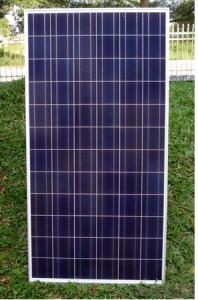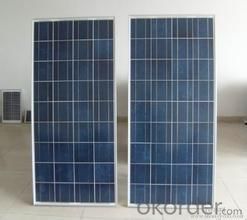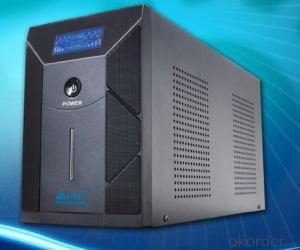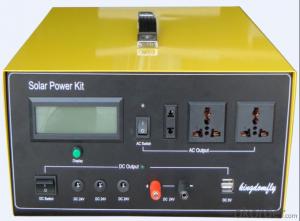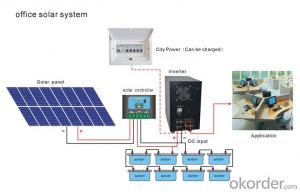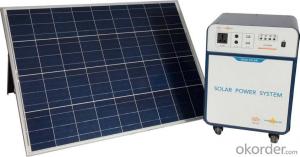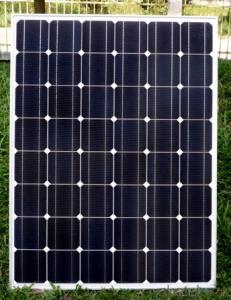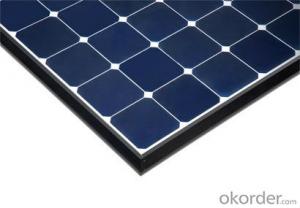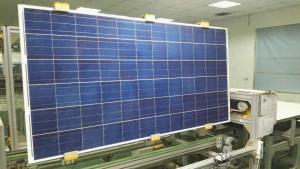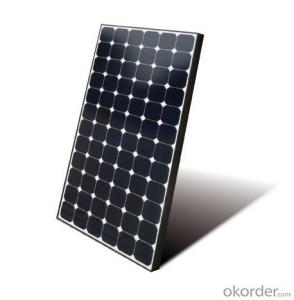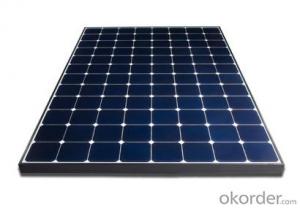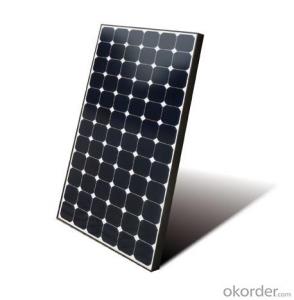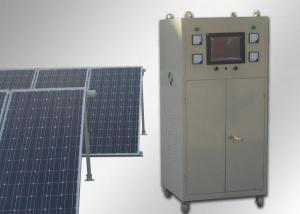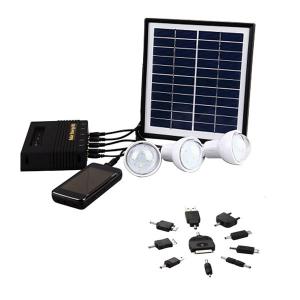American Solar Energy Systems CNBM Poly 70W Off Grid Solar System with 10 Years Warranty
- Loading Port:
- Shanghai
- Payment Terms:
- TT OR LC
- Min Order Qty:
- 10 watt
- Supply Capability:
- 1000 watt/month
OKorder Service Pledge
OKorder Financial Service
You Might Also Like
Specification
CNBM Poly 70W Off Grid Solar Sytem with 10 Years Warranty
Product description
Off-the-grid is a system and lifestyle[1] designed to help people function without the support of remote infrastructure, such as anelectrical grid. In electricity, off-grid can be stand-alone power system or mini-grids typically to provide a smaller community with electricity. Off-grid electrification is an approach to access electricity used in countries and areas with little access to electricity, due to scattered or distant population. The term off-the-grid (OTG) can refer to living in a self-sufficient manner without reliance on one or more public utilities. People who adopt this lifestyle are called off-gridders.[2]
The concept of a sustainable off-grid community must take into consideration the basic needs of all who live in the community. To become truly self-sufficient, the community would need to provide all of its own electrical power, food, shelter and water. Using renewable energy, an on-site water source, sustainable agriculture and vertical farming techniques is paramount in taking a community off the grid. A recent concept design by Eric Wichman shows a multi-family community, which combines all of these technologies into one self-sufficient neighborhood. To grow the community you simply add neighborhoods using the same model as the first. A self-sustained community reduces its impact on the environment by controlling its waste and carbon footprintElectrical power can be generated on-site with renewable energy sources such as solar (particularly with photovoltaics), wind, micro hydro, geothermal; with a generator or Micro combined heat and power with adequate fuel reserves. Such a system is called a stand-alone power system. In addition, it is possible to simply eliminate electric power such as in Old Order Amish and Old Order Mennonitecommunities.
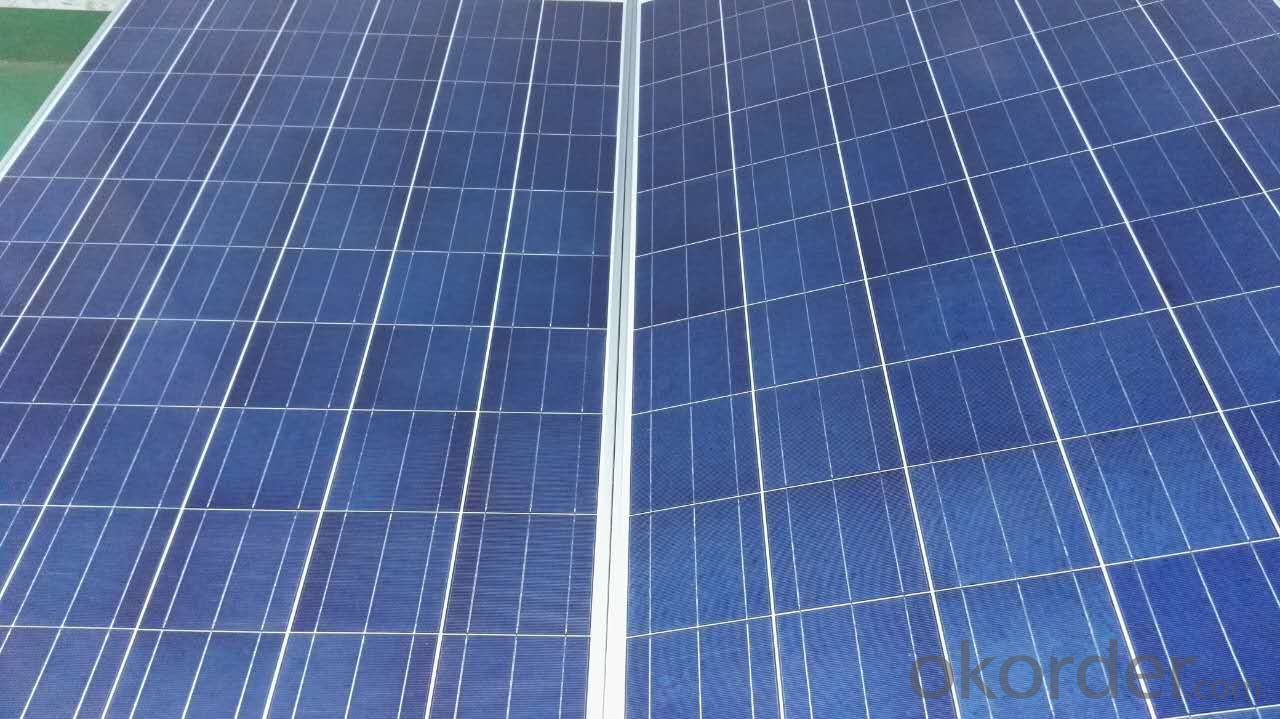
Application
Residential
Commercial
Industrial
Feature
Off-the-grid homes are autonomous; they do not rely on municipal water supply, sewer, natural gas, electrical power grid, or similar utility services. A true off-grid house is able to operate completely independently of all traditional public utility services. The idea has been recently popularized by certain celebrities including Ed Begley, Jr.[3] who stars in the Living with Ed[4] television show on the Home & Garden Television (HGTV) network. Actress Daryl Hannah promotes off-grid living and constructed her home in Colorado according to those principles, as does survival expert and Dual Survival co-star Cody Lundin,[5] who lives in a self-designed, passive solar earth house in the high-desert wilderness of Northern Arizona, collecting rainwater, composting waste, and paying nothing for utilities.[6][7]
Packaging
With carton and box
- Q: How can I calculate the size of a solar energy system for my home?
- In order to determine the size of a solar energy system for your home, several factors need to be taken into consideration. The following steps can be followed: 1. Begin by analyzing your past energy bills to understand your average monthly energy usage in kilowatt-hours (kWh). This will provide an indication of the amount of electricity your solar system should generate. 2. Evaluate your location, as the amount of sunlight your home receives is dependent on its geographical position. Consult the solar resource map for your area to estimate the average daily solar radiation. This information will assist in determining the efficiency of the solar panels. 3. Calculate your energy requirements by multiplying your average monthly energy usage in kWh by 12 to obtain your annual energy consumption. Then divide this figure by 365 to determine your daily energy consumption. 4. Determine the output of the solar panels by considering their wattage rating, which indicates the amount of power they can generate under ideal conditions. Divide your daily energy consumption by the average daily solar radiation to estimate the number of solar panels required. For example, if your daily energy consumption is 40 kWh and the average daily solar radiation is 5 kWh/m2, you would need an 8 kW solar system (40 kWh / 5 kWh/m2 = 8 kW). 5. Take into account system losses, which occur due to factors such as shading, dirt, and inefficiencies in the inverter. To compensate for these losses, multiply the estimated system size by a derating factor, which typically ranges from 0.75 to 0.9. This will provide the final system size required. 6. Seek guidance from a solar energy professional or installer, as it is advisable to consult with an expert who can conduct a site assessment and provide accurate calculations based on your specific home and energy needs. They will consider additional factors such as roof orientation, available space, and local regulations to ensure the optimal size of the solar system for your home. Keep in mind that the size of your solar energy system is also influenced by your objectives, budget, and available space. A professional consultation will enable you to make an informed decision and maximize the advantages of solar energy for your home.
- Q: How do solar energy systems affect the aesthetics of a building?
- Solar energy systems can impact the aesthetics of a building in both positive and negative ways. On one hand, well-designed solar panels can be visually appealing and can enhance the overall architectural design of a building. They can provide a modern and eco-friendly look, especially when integrated seamlessly into the structure. On the other hand, some people may find solar panels to be unsightly, especially if they are not properly integrated or if they significantly alter the original design of the building. Ultimately, the effect on aesthetics depends on the design, placement, and integration of the solar energy system.
- Q: Can solar energy systems be used in areas with limited access to solar panel manufacturers?
- Yes, solar energy systems can still be used in areas with limited access to solar panel manufacturers. In such cases, it may be necessary to import solar panels from manufacturers located elsewhere or explore alternative options such as portable solar panels or solar kits. Additionally, local manufacturing capabilities can be developed gradually to meet the demand for solar panels in the area.
- Q: Can solar energy systems be installed on flat surfaces?
- Yes, solar energy systems can be installed on flat surfaces. While it is more common to install solar panels on angled surfaces to maximize sunlight absorption, flat surfaces can still be utilized for solar energy systems. Mounting systems can be used to tilt the panels towards the sun and optimize energy production even on flat surfaces.
- Q: How does the size of a solar energy system affect its output?
- The size of a solar energy system directly affects its output. Generally, the larger the solar energy system, the more electricity it can generate. The output of a solar energy system is measured in kilowatt-hours (kWh) and is determined by the capacity of the system, which is usually expressed in kilowatts (kW). A larger solar energy system with a higher capacity can generate more electricity because it has a greater number of solar panels. Solar panels are the primary components of a solar energy system that convert sunlight into electricity. Each solar panel consists of multiple solar cells, which absorb sunlight and produce direct current (DC) electricity. When multiple solar panels are connected together in a solar energy system, their combined capacity increases. This means that more solar cells are working together to convert sunlight into electricity, resulting in a higher output. A larger solar energy system can produce more electricity, especially during peak sunlight hours, when there is ample sunlight available for conversion. Moreover, a larger solar energy system may also have additional components, such as inverters and batteries, which can further enhance its output. Inverters convert the DC electricity produced by the solar panels into alternating current (AC) electricity that can be used in homes or businesses. Batteries store excess electricity generated by the system for later use, allowing for a more consistent output even when sunlight is not available. However, it is important to note that the size of a solar energy system should be properly matched to the energy needs of the user. Oversizing a solar energy system may result in excess electricity production, which might go to waste if it cannot be efficiently utilized or stored. On the other hand, an undersized system may not generate enough electricity to meet the user's needs. In conclusion, the size of a solar energy system directly affects its output. A larger system with a higher capacity can generate more electricity due to a greater number of solar panels and components. However, it is crucial to find the right balance between system size and energy needs to ensure optimal efficiency and utilization of the solar energy system.
- Q: Can solar energy systems be used for powering schools or educational institutions?
- Schools and educational institutions can utilize solar energy systems to provide power. In fact, many schools around the world are adopting solar energy systems as a sustainable and clean energy source. Solar panels can be installed on school buildings or in open spaces on campus to harness the sun's power. This renewable energy source can generate a significant amount of electricity for the school. There are several advantages to incorporating solar energy systems in schools. Firstly, solar power is a clean energy source that does not produce harmful emissions or contribute to air pollution. This helps reduce the carbon footprint of the school. Additionally, solar energy systems can save schools money on their electricity bills in the long term. Once the initial installation costs are recovered, the electricity generated by solar panels is essentially free. These savings can be reinvested in educational resources or programs. Integrating solar energy systems into schools also provides valuable educational opportunities for students. By utilizing solar power, schools can educate students about renewable energy, climate change, and the importance of sustainability. Students can learn about the science behind solar energy, the benefits of clean energy sources, and their role in promoting a greener future. Furthermore, solar energy systems can serve as a backup power source during outages or emergencies. This ensures uninterrupted power supply to the school, especially during critical times like exams or in areas with unreliable electricity infrastructure. In conclusion, solar energy systems can be effectively used to power schools and educational institutions. They offer numerous benefits, including reduced carbon emissions, cost savings, educational opportunities, and backup power capabilities. By embracing solar power, schools can demonstrate their commitment to sustainability, inspire students, and contribute to a cleaner and greener future.
- Q: Can solar energy systems be used in areas prone to hurricanes or typhoons?
- Solar energy systems can indeed be utilized in regions susceptible to hurricanes or typhoons. Although severe weather conditions like these can pose a threat to solar panels, contemporary solar energy systems are specifically engineered to endure such circumstances. Typically, solar panels are constructed to withstand strong winds and hail, undergoing rigorous testing and certification to meet specific wind resistance standards. These panels are securely mounted and firmly anchored to roofs or the ground, effectively preventing them from being lifted or blown away during powerful winds. Manufacturers additionally conduct extensive tests to verify the panels' ability to endure extreme conditions, including those encountered during hurricanes or typhoons. In areas prone to hurricanes or typhoons, it is common to have building codes and regulations that necessitate solar installations to meet precise wind load requirements. These requirements ensure that the solar energy systems can withstand the forceful winds associated with such storms. Moreover, inverters and other components of solar energy systems are often situated in protected areas, such as basements or garages, in order to minimize the potential for damage from flooding or flying debris. Stringent installation practices, including reinforced mounting systems and proper grounding, can further augment the durability and resilience of solar energy systems in hurricane or typhoon-prone areas. It is important to acknowledge that while solar energy systems can endure severe weather events to a certain degree, there is always a risk of damage during exceptionally powerful hurricanes or typhoons. However, this risk is not exclusive to solar energy systems and applies to other forms of infrastructure as well. By adhering to proper design, installation, and compliance with local building codes, this risk can be minimized, ensuring the secure and dependable operation of solar energy systems in hurricane or typhoon-prone areas.
- Q: How much space is required to install a solar energy system?
- The amount of space required to install a solar energy system depends on various factors such as the size and capacity of the system, the location, and the available sunlight. Generally, a small residential solar energy system may require around 100-400 square feet of roof space, while larger systems for commercial or industrial use could require several thousand square feet or even acres of land. It is recommended to consult with a solar energy professional to determine the specific space requirements for a particular system.
- Q: How do solar energy systems impact the energy poverty gap?
- Solar energy systems have the potential to significantly impact the energy poverty gap by providing clean and affordable electricity to those who do not have access to reliable energy sources. Energy poverty refers to the lack of access to electricity and modern energy services, which affects millions of people worldwide. One of the key advantages of solar energy systems is their ability to generate electricity in a decentralized manner, making them suitable for off-grid and rural areas where connecting to the traditional power grid is often challenging and costly. These systems can be easily installed and are scalable, allowing for customized solutions based on the energy needs of a particular community or household. By harnessing the power of sunlight, solar energy systems can provide a sustainable and reliable source of electricity, reducing the dependence on traditional fossil fuels that are often expensive and environmentally harmful. This, in turn, helps to alleviate the financial burden on individuals and communities, as solar energy can be generated for free once the system is installed. Furthermore, solar energy systems also have the potential to stimulate economic development in energy-poor regions. By providing access to electricity, solar systems enable the establishment of small businesses, such as charging stations for mobile phones, refrigeration units for storing perishable goods, or even micro-grids to power communal services like schools and healthcare facilities. These economic activities can create job opportunities and improve the overall quality of life in these areas. In addition to economic benefits, solar energy systems also contribute to environmental sustainability. By generating electricity from renewable sources, they help reduce greenhouse gas emissions and mitigate climate change. This is particularly important in energy-poor communities that often rely on traditional energy sources, such as kerosene lamps or diesel generators, which emit harmful pollutants and contribute to air pollution. In conclusion, solar energy systems have a profound impact on the energy poverty gap by providing clean, affordable, and sustainable electricity to those who lack access to modern energy services. They offer a decentralized and scalable solution that can stimulate economic development, improve quality of life, and contribute to environmental sustainability.
- Q: Can solar energy systems be used in areas with high levels of dust or sand?
- Yes, solar energy systems can still be used in areas with high levels of dust or sand. While the accumulation of dust or sand on solar panels can decrease their efficiency, regular cleaning and maintenance can mitigate this issue. Additionally, the design of solar panels has improved over the years to be more resistant to dust and sand, allowing them to continue generating power effectively even in such environments.
Send your message to us
American Solar Energy Systems CNBM Poly 70W Off Grid Solar System with 10 Years Warranty
- Loading Port:
- Shanghai
- Payment Terms:
- TT OR LC
- Min Order Qty:
- 10 watt
- Supply Capability:
- 1000 watt/month
OKorder Service Pledge
OKorder Financial Service
Similar products
Hot products
Hot Searches
Related keywords
